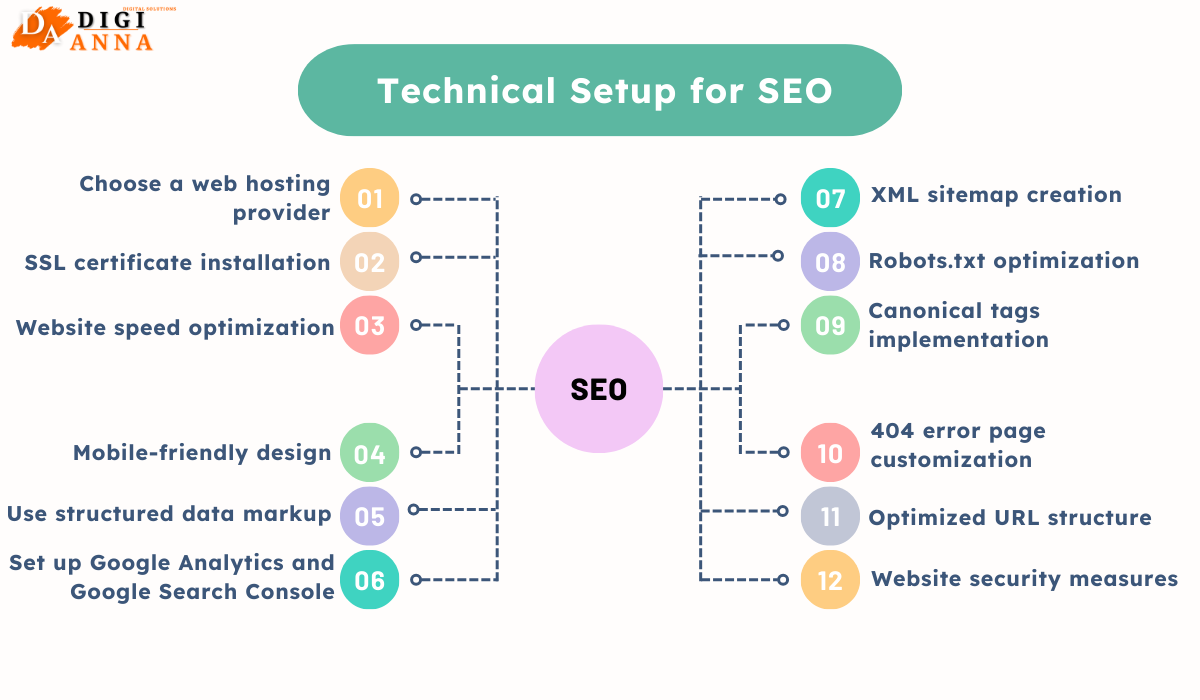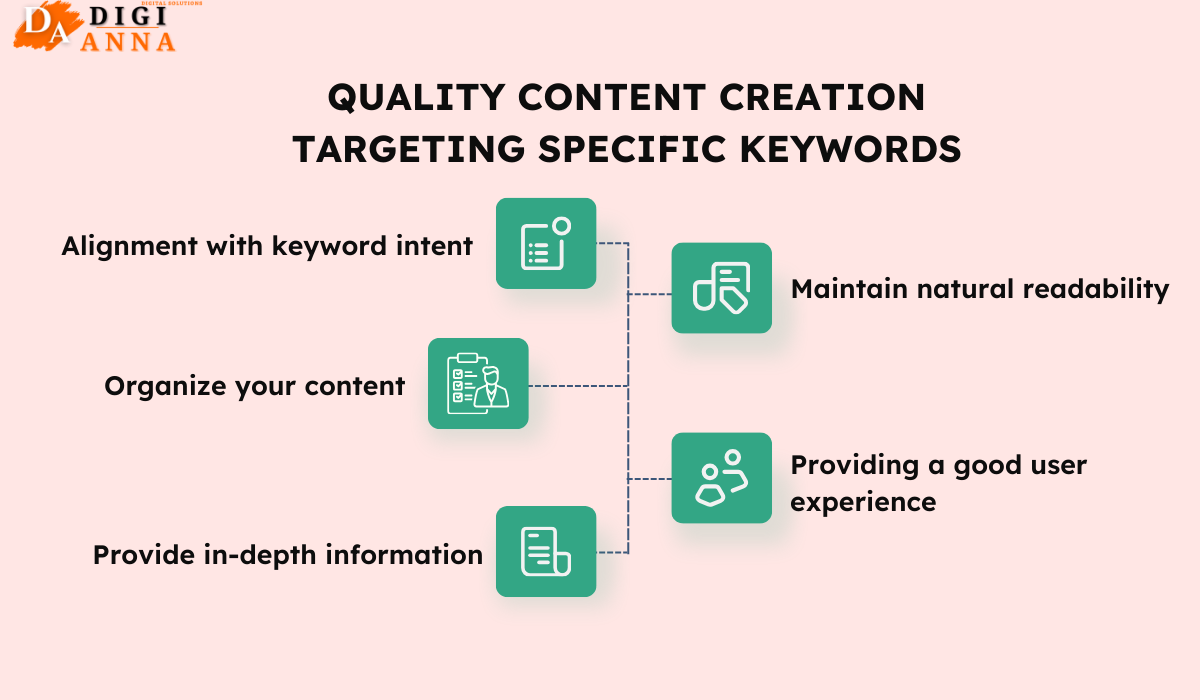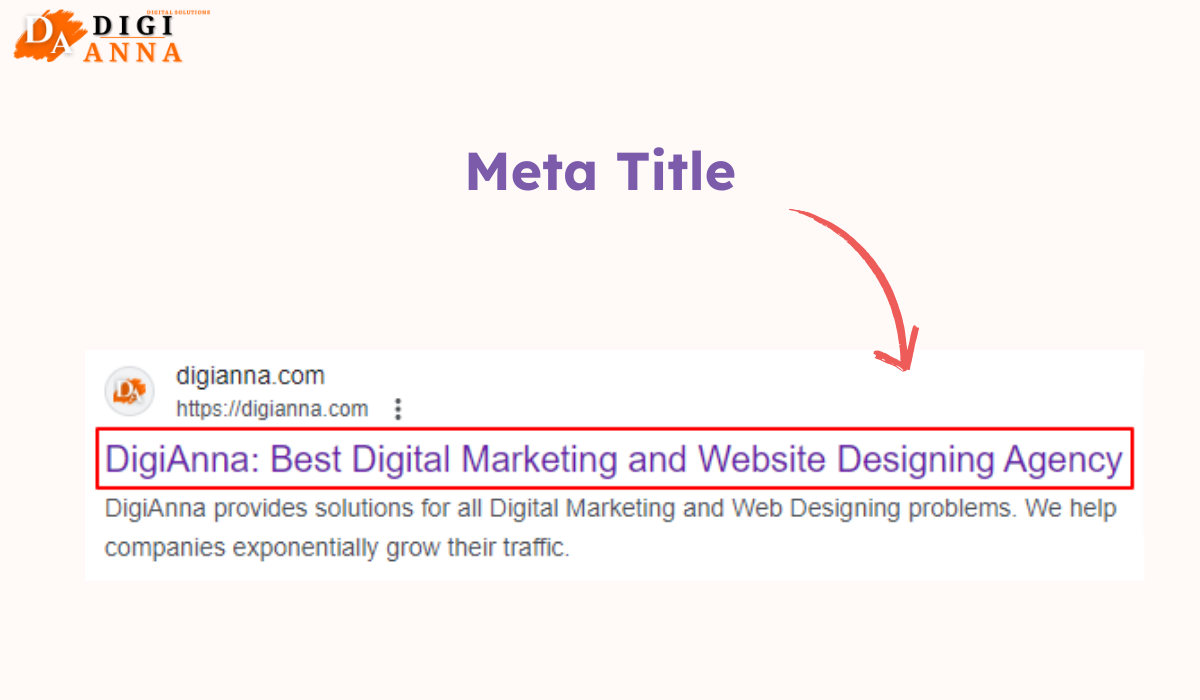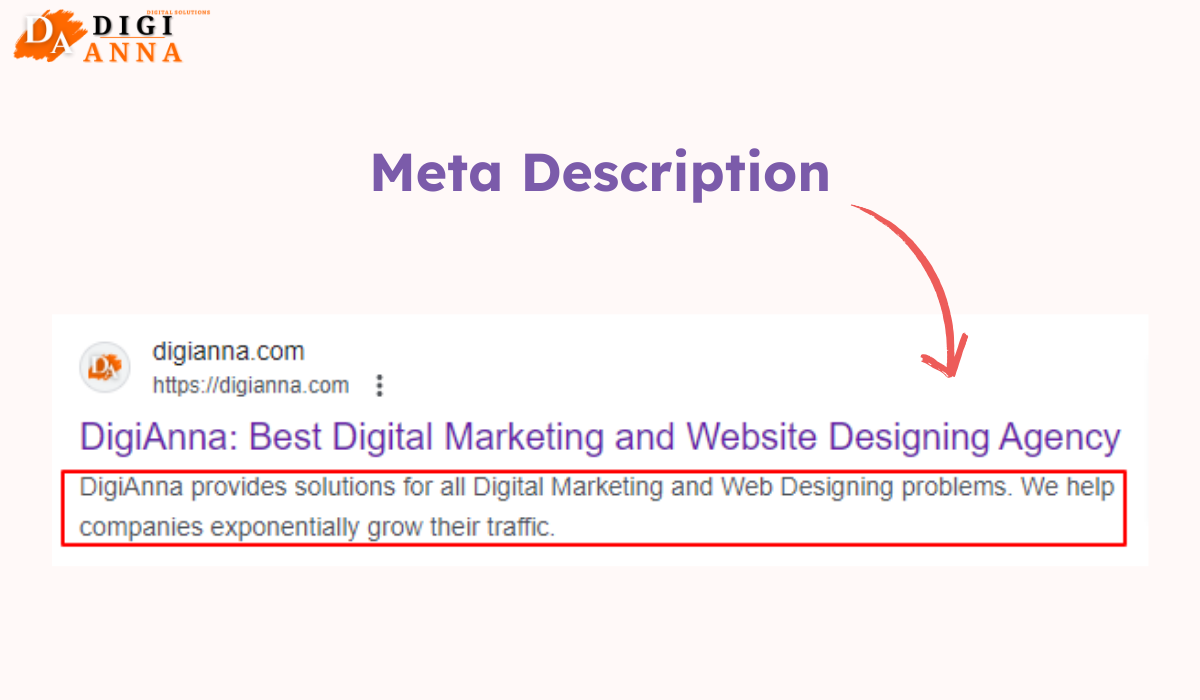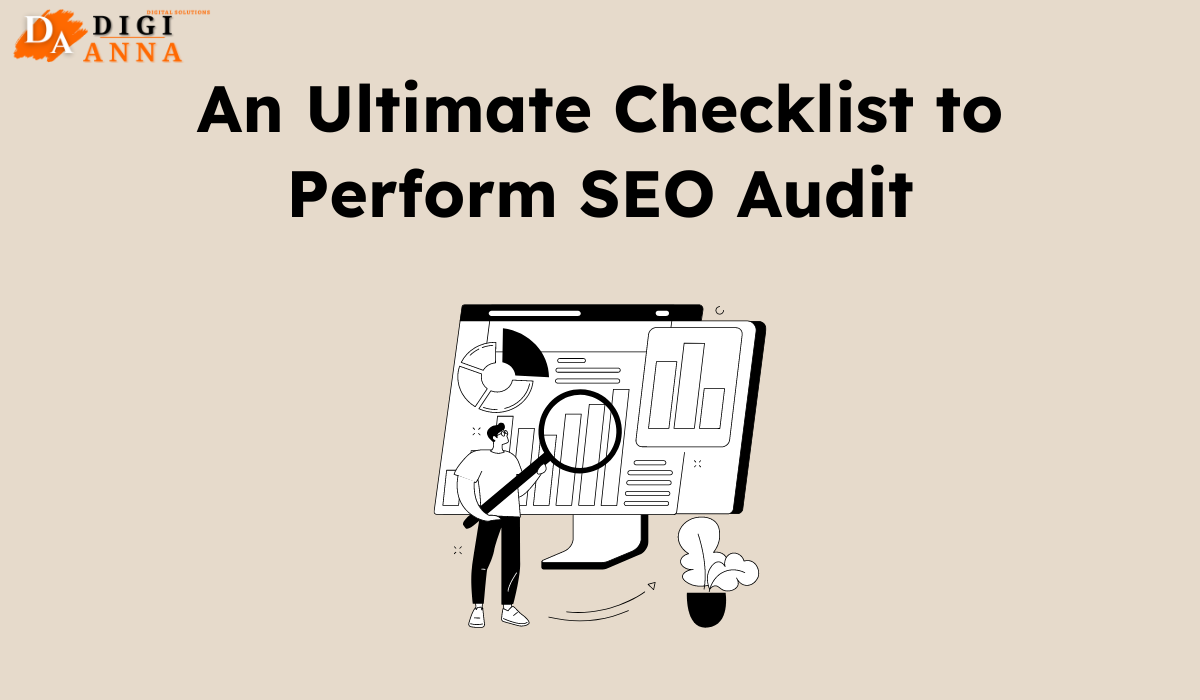In the digital sphere, having a website is just the beginning. Making it visible is the real challenge! Understanding the fundamentals of SEO and how to do SEO for a website is crucial for improving its visibility on search engines like Google. From choosing the right keywords to optimizing your website structure, we’ll walk you through the SEO basics step by step. Following these steps, you’ll attract more visitors to your website organically and reach your audience effectively.
Today, most of us rely on search engines for answers, ideas, products, strategies, or services. Google, for instance, receives a staggering 3.5 billion searches daily. Search engines have become vital in our daily routines and become central to many business marketing plans. In fact, 49% of marketers consider organic search the highest ROI channel.
What SEO Means for a Website?
Understanding the relevance of digital marketing is essential for the success of any website. SEO lies at the core of this domain. But what is Search Engine Optimization exactly? It’s about increasing the visibility of your website when people search online.
It involves three main components:
Search: Firstly, consider what people do when searching for something online. They’re searching for answers, products, or services that cater to their needs.
Search engine: To carry out this search, they turn to platforms like Google or Bing, which help them find relevant information.
Optimization: Now, let’s discuss what you can do to ensure these search engines connect users with your site. That’s where optimization comes in. All that matters is growing the search engine visibility and appeal for your website.
SEO Ranking Factors: How they Impact a Website?
SEO ranking factors are the criteria that influence how well a website ranks in search engine results. These factors determine where your website appears when someone searches for specific keywords or phrases. With hundreds of Google ranking factors, Google continually evolves and refines its algorithm for the best user experience. However, we are discussing 12 crucial factors.
Google Ranking Factors for SEO
1. Content quality
Google prioritizes websites with high-quality, relevant, targeted, EEAT-friendly, and SEO-optimized content that addresses users’ search queries effectively
2. Niche expertise
Demonstrating expertise in your specific industry or topic helps search engines understand the relevance and authority of your website. Consistently publishing high-quality, informative content related to your niche can improve your rankings.
3. Keywords
Use relevant keywords strategically in your content, such as meta title, description, header tags, and URL, to improve visibility.
4. User intent
Understand and fulfil user search intent with relevant and informative content to rank higher on Google.
5. Internal links
Internal linking connects different pages on your website, improving navigation and user experience. Strategic internal linking can help search engines discover and index your content more effectively, improving your rankings.
6. Backlinks
Backlinks from reputable websites endorse your site’s credibility and authority, positively impacting its SEO performance.
7. Website security (HTTPS)
Secure your website with HTTPS encryption. HTTPS websites rank higher in search results due to enhanced security.
8. Page speed
Improve loading times on desktop and mobile devices to enhance user experience.
9. Technical SEO
Fix broken links, crawl errors, and duplicate content, optimize robots.txt, and ensure proper website indexing
10. Page authority
Enhance your page’s authority through internal linking, quality content, and social signals.
11. On-page optimization
Optimize meta titles, descriptions, and headers with relevant keywords. Use descriptive URLs and include keyword-rich alt text for images for better visibility.
12. Domain authority
Build domain authority through consistent content creation and link building. Higher domain authority increases the likelihood of ranking well in search results.
How to Do SEO?
Let’s discuss how to actually do SEO—how you can optimize your website to rank higher on Google and attract more organic traffic. First and foremost, you must prepare a technical setup to optimize a site for SEO. This setup lays the foundation for effective search engine optimization. Additionally, it ensures that your website meets the technical requirements that search engines look for when ranking websites.
Prepare a Technical Setup
- Choose a reliable web hosting provider: Opt for a hosting provider with good uptime and fast loading speeds to ensure your website performs well.
- SSL certificate installation: Secure your website with an SSL certificate to encrypt data transmission and improve trustworthiness. Switch to HTTPS to signal to search engines that your site is secure.
- Website speed optimization: Prioritize fast loading times by optimizing images, reducing server response times, and minimizing HTTP requests. In order to identify and address speed issues, make use of tools such as Google PageSpeed Insights.
- Mobile-friendly design: Ensure your website is responsive and displays correctly on various devices. Test mobile usability using tools such as Google’s Mobile-Friendly Test.
- Structured data implementation: Use structured data markup (schema.org) for elements like articles, events, products, and reviews. It helps search engines with additional context about your content which can lead to enhanced rich snippets in search results.
- Set up Google Analytics and Google Search Console: These SEO tools track the organic traffic, monitor your website’s performance and receive valuable insights.
- XML sitemap creation: Generate an XML sitemap to provide search engines with a roadmap of your website’s pages. Submit the sitemap to search engine webmaster tools for indexing.
- Robots.txt optimization: Customize your robots.txt file to instruct search engine crawlers on which pages to crawl and which to avoid. Ensure critical pages are accessible and non-essential pages are excluded.
- Canonical tags implementation: Use canonical tags to indicate the preferred version of duplicate or similar content, preventing potential indexing issues.
- 404 error page customization: Create a 404 error page to provide users with helpful navigation options when they encounter broken links. Ensure the page returns a proper HTTP status code (404).
- Optimized URL structure: Use descriptive and user-friendly URLs that accurately represent the content of each page and make it easier for both users and search engines to understand.
- Website security measures: Regularly update software, plugins, and themes to patch security vulnerabilities. Implement security protocols such as firewalls and malware scanning to protect against cyber threats.
How to Do On-Page SEO Optimization?
Begin your journey by optimizing your web pages. This step prepares for what you do outside your site, making your SEO thorough and effective. Make sure each part follows with search engine preferences. Moreover, it makes your website look better to users. It also helps search engines understand it by putting keywords in the right places and creating exciting content.
Start by conducting keyword research
Keyword research involves finding what people search on Google. And identify the queries for which your website or specific page should rank. Using tools like Google Keyword Planner and Semrush, you can effortlessly discover keywords relevant to any topic you’re targeting. These tools streamline the keyword research process, making it easier to find suitable keywords for your content. When selecting keywords for your site or page, relevancy is a must.
Beyond relevance, two key metrics come into play:
- Keyword search volume: It represents the average number of monthly searches.
- Keyword difficulty score (KD %): It measures the competitiveness of ranking for that keyword.
Higher search volume keywords can potentially drive more traffic to your site. However, it’s essential to note that higher-volume keywords often come with higher competition.
Quality content creation targeting specific keywords
Craft quality content targeting specific keywords. Ensure your main navigation pages (homepage, about us, contact, products, services) focus on relevant keywords.
- Alignment with keyword intent: Quality content must align with the intent of the keywords. Before crafting content, search the keyword on Google to understand user intent.
- Providing a good user experience: Avoid aggressive pop-ups or CTAs and other distracting elements. Utilize images to illustrate concepts and ensure your content loads swiftly and correctly on all devices.
- Maintain natural readability: Maintain a natural tone in your writing; avoid keyword stuffing. Write as if you’re conversing with your audience rather than solely focusing on search engine optimization.
- Provide in-depth information: Google prefers substantial, unique, and valuable pages, typically ranging from 1,500 to 2,500 words.
- Organize your content: Utilize heading tags to highlight the hierarchy of information on the page.
Keyword Optimization: Placing Keywords on the Page
Strategically position your keywords throughout your content. Here’s where you should include the main keyword:
- SEO title (Title Tag): Place the primary keyword at the beginning of the post’s title to maximize its value.
- URL: Ideally, include the keyword in the URL without additional words and remove stop words for clarity.
- Page title (H1 Tag): Check that the H1 tag displays the page title and isn’t overridden by platform settings.
- First 100 words or first paragraph: Position the keyword within the first 100 words or initial paragraph of your content to establish relevance promptly.
- Meta-title and meta-description: Optimize meta-title and meta-description tags, as search engines use them to understand the page’s topic.
- File names and ALT tags: Use keyword inclusion in image file names and ALT tags to ensure search engines effectively recognize the page’s content.
- Naturally in the body: Integrate your keyword naturally throughout the body of your content. Avoid overstuffing and prioritize readability for both users and search engines.
- At least two H2 headings: Utilize your keyword in at least two H2 headings. These headings provide structure to your content and help Google understand your key points.
Placing your targeted keywords in these areas provides clear signals to search engines about your content’s relevance, ultimately improving your chances of ranking higher in search results.
Optimizing Title Tags:
When it comes to optimizing your website for search engines, one crucial aspect to focus on is your titles. Titles significantly attract clicks from search engine results pages (SERPs) and engage visitors once they land on your site.
Your website actually has two titles for each page: the title tag and the H1 tag. The title tag appears on the SERP, making it the most impactful place for placing your keyword. Meanwhile, the H1 tag is the title displayed on the page when a user clicks on it.
- Utilize the keywords effectively: Add the primary keyword naturally in the title. Additionally, related modifiers around the keyword should be incorporated to enhance its relevance and appeal to users and search engines.
- Avoid keyword stuffing: Ensure your title tags are natural and readable, avoiding overuse of keywords.
- Include brand name: Incorporate your brand name near the beginning or end of the title tag for brand recognition.
- Maintain one H1 per page: Each page should have only one H1 tag as the main headline. Subsequent headings (H2s) should be used to label your main sections, facilitating navigation and readability.
- Optimize title tag length: Keep your title tags concise and to the point. Based on pixels, Google typically displays around 55-60 characters of your title tag on the SERP. Therefore, prioritize placing the keyword at the beginning of the title for maximum visibility.
- Highlight value proposition: Communicate the value proposition of your page to users. It influences their decision to click on your link in the SERP and encourages them to continue reading once on your site.
- Update regularly: Keep title tags up-to-date with any changes in content or focus keywords to maintain relevance and effectiveness.
Optimize Meta Description
Optimizing your meta descriptions is crucial for improving your SEO. The meta description, displayed below the title tag on SERPs, summarises your page’s content. Although Google sometimes generates its own description, providing an optimized one is essential. This description is read by Google when crawling your page to understand its content.
- Craft a compelling description: Write a concise and engaging summary of your web page’s content in the meta description.
- Position the keywords naturally: Include your target and related keywords in the meta description in a way that feels organic and engaging.
- Keep it brief: Aim for 70-155 characters to ensure it displays appropriately on SERPs without being cut off.
- Match search intent: Align your meta description with the searcher’s intent to attract qualified traffic.
- Clarify your unique selling proposition: To stimulate people to click, highlight what makes your content distinct or meaningful.
- Provide a clear Call-to-Action: End your meta description with a clear call-to-action to encourage users to visit your webpage.
- Use action-oriented language: Encourage users to take action, such as “Learn more” or “Shop now,” to increase click-through rates.
- Optimize for readability: Make your meta description easy to read and understand to capture attention quickly.
Optimize Images
Images play a crucial role in optimizing SEO. They engage users with your pages, improve information quality, and allow for ranking opportunities, driving traffic to their host pages via image results. Moreover, Google continues to enhance the visual aspect of the SERP. As a result, integrating appealing images into your content can significantly impact your website’s visibility and performance on search engines.
- Choose the right file name: Use descriptive filenames with relevant keywords that accurately depict the content. For instance, rather than “IMG123.jpg,” choose “How-to-do-SEO.jpg” to better convey the file’s content.
- Use alt text: Add alt text to describe the image for users who cannot see it. Include keywords naturally in the alt text to improve SEO.
- Optimizing image size: Compress images to decrease the file size without impacting the quality. This improves page loading speed, which is important for SEO.
- Choose the right format: Use the appropriate image format (JPEG, PNG, GIF) based on the type of image and its intended use.
- Utilize image sitemaps: Include images in your sitemap to help search engines discover and index them more efficiently.
- Implement responsive images: Ensure images adjust to different screen sizes for a better user experience, which can positively impact SEO rankings.
- Add captions when necessary: Captions can provide context for images and include relevant keywords, enhancing SEO.
- Host images on your domain: Keep images on your own domain rather than hosting them externally. It strengthens your website’s authority and improves SEO.
- Utilize image title attributes: Use title attributes to provide additional information about the image. If it makes sense, include keywords, but don’t overdo it with keyword stuffing.
- Optimize thumbnails: If your website uses thumbnails, ensure they are optimized for size and include descriptive alt text for SEO benefits.
Internal and External Linking
In optimizing blog posts for SEO, including internal and external links is important. It helps improve your website’s authority and relevance, contributing to higher search engine rankings. Additionally, internal links guide users to other relevant pages within your site, enhancing their browsing experience. On the other hand, external links to authoritative sources can provide valuable context and credibility to your content.
By strategically adding internal and external links, you can boost the overall quality and visibility of your blog posts, ultimately improving your website’s SEO performance.
Internal Link Optimization
- Identify relevant anchor text: Choose descriptive and keyword-rich anchor text for internal links.
- Utilize relevant pages: Link to pages within your site that are contextually related to the content.
- Maintain a logical structure: Ensure that the internal linking structure follows a logical hierarchy, making it easy for users and search engines to navigate.
External Link Optimization:
- Seek authoritative and relevant external websites for linking.
- Use descriptive anchor text for external links.
- Monitor external links to ensure they’re still valid and relevant.
- Avoid excessive external linking, prioritizing quality over quantity.
- Consider implementing rel=”nofollow” for certain external links to control link equity distribution.
How to Do Off-Page SEO Optimization?
Off-Page SEO Optimization is the strategy and technique to enhance your website’s authority and relevance. Strategically using external factors boosts website rankings and establishes credibility. Here are the strategies to develop your digital footprint and outrank the competition.
Earn Backlinks Organically
- Conduct research for quality sources: Find authoritative websites within your niche. Also, Search for websites that have high domain authority and are relevant to your content.
- Utilize anchor text strategically: Use descriptive anchor text that accurately reflects the linked content. Avoid using generic anchor text like “click here” or “read more.” Ensure anchor text is natural and fits seamlessly within the context of the linking page.
- Track and disavow unhealthy backlinks: Constantly evaluate your backlink profile to detect spammy or low-quality links. Utilize Google’s Disavow Tool to request the removal of harmful backlinks that may negatively impact your site’s SEO.
- Diversify backlink sources: Seek backlinks from a variety of sources, including blogs, news sites, directories, and forums, to create a diverse and natural backlink profile.
Encourage Social Sharing and Engagement
Maximize your social media presence through active engagement with your audience. Sharing valuable content enhances brand visibility and encourages social sharing. Additionally, make sure to interact regularly with your followers and respond promptly to their comments and messages. Moreover, leverage various social media features such as polls, stories, and live videos to keep your audience engaged and interested.
Content Promotion
To enhance the visibility of your content, actively share it across different platforms such as social media, forums, and online communities. Additionally, collaborate with influencers and industry experts to extend the reach of your content even further. You can effectively promote your content and expand its exposure to your desired audience through these methods.
Guest Blogging and Content Contributions
Improve your website’s visibility by writing guest posts or contributing content to reputable websites. Make sure that your guest posts align with the interests of the host site’s audience and provide valuable insights. You can effectively expand your reach by offering relevant, high-quality content and establishing authority in your niche.
Outreach and Relationship Building
Strengthen your online presence through outreach and building relationships. Connect with influencers and partners in your niche to engage. Expanding your network increases visibility and website authority. Ultimately, these efforts improve your website’s credibility and performance.
Leverage Online Directories and Resource Pages
Submit your website to reputable online directories and resource pages in your industry. Select directories and resource pages relevant to your niche and location, as this can boost your online presence and credibility. Doing so enhances your website’s visibility and accessibility to potential customers or clients. Additionally, this strategy can improve your website’s search engine rankings, increasing its chances of being found by relevant audiences.
Online Reputation Management
Keep an eye on what people are saying about you online and reply quickly, whether it’s good or bad. Doing this helps you keep a good image on the internet. As a result, you can build trust and credibility with your audience.
How to Do Technical SEO Optimization?
Technical SEO makes your website better for Google by fixing things in the background. It’s about making sure your site is safe and easy for users. Here are some significant steps that one should undertake:
- Audit your website: Start by analyzing your website’s structure and performance.
- Analyze website structure: Examine your website’s structure to ensure it’s well-organized and easy to navigate.
- Optimize URL structure: Keep URLs concise, descriptive, and include relevant keywords.
- Improve pagespeed: Improve page loading times by compressing images, minifying code, and leveraging browser caching.
- Fix crawl errors: Identify and resolve any crawl errors using tools like Google Search Console.
- Fix broken links and redirects: Regularly check for broken links and redirects and fix them promptly to maintain a smooth user experience.
- Implement schema markup: Add structured data markup to provide search engines with additional context about your content.
- Optimize robots.txt: Control which pages search engines can crawl and index by optimizing your robots.txt file.
- Create XML sitemap: Generate an XML sitemap and submit it to search engines to help them crawl and index your website more effectively.
- Use canonical tags: Avoid duplicate content across your site to prevent keyword cannibalization using canonical tags.
- Use header tags: Utilize header tags (H1, H2, H3) to structure your content logically and help search engines understand your page’s hierarchy.
- Optimize for mobile: Ensure your website is mobile-friendly and responsive, as mobile optimization is crucial for SEO.
- Monitor site health: Regularly check for errors, broken links, and other issues using tools like Screaming Frog or SEMrush.
- Track performance: Regularly monitor your website’s performance using tools like Google Analytics and Search Console to identify areas for improvement.


